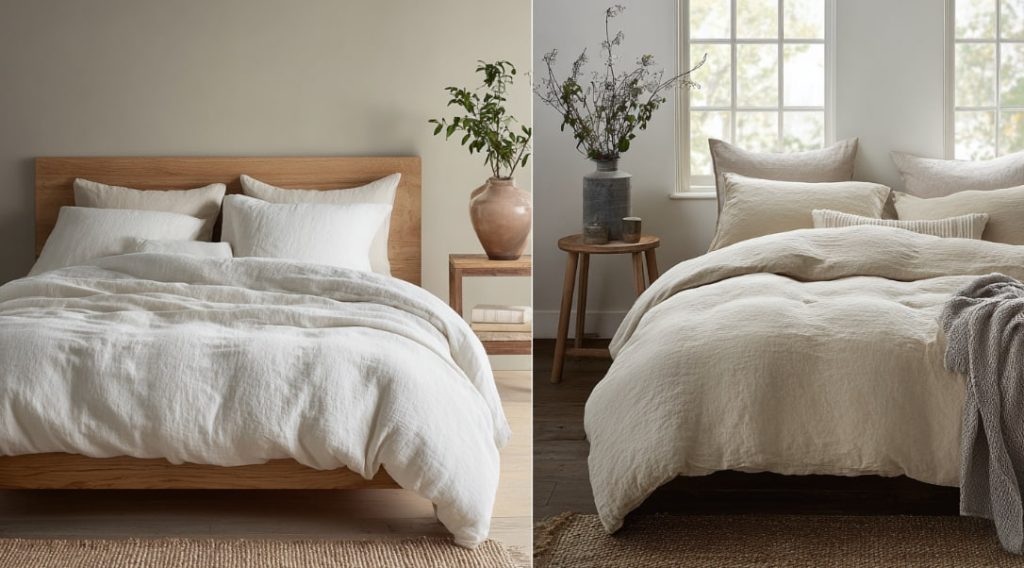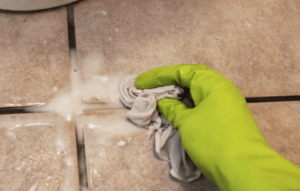How to tell the difference between linen and cotton? Linen and cotton are two of the most commonly used natural fabrics, popular for their comfort, breathability, and durability. While they might seem similar at first glance, each has distinct characteristics and care requirements. Knowing how to tell linen and cotton apart can be especially useful when choosing clothing, bedding, or other household textiles, ensuring you select the most suitable fabric for your needs. In this article, we’ll explore easy and effective ways to differentiate between linen and cotton, highlighting their textures, appearances, performance, and simple tests you can perform at home.
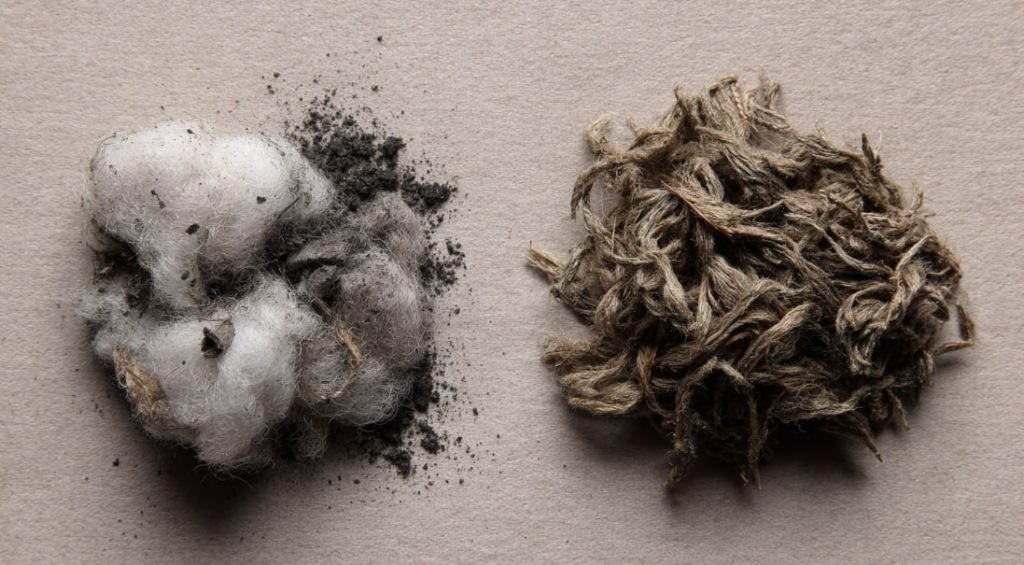
Meet the Materials: Where Do They Come From?
Understanding a fabric’s origin is the key to understanding its character.
- Linen is a textile with thousands of years of history, derived from the stalks of the flax plant. Its production process is incredibly labor-intensive: flax is harvested, soaked (retted), dried, crushed, and combed to extract the treasured fibers. This complexity is what defines its higher price point and unique properties.
- Cotton is the world’s most common plant-based textile, harvested from the fluffy bolls of the cotton plant. Its production is largely automated, making it more affordable. Cotton is synonymous with versatility, softness, and comfort.
How to Tell the Difference Between Linen and Cotton: Understanding
Before diving into differences, it’s important to briefly understand what each fabric is:
- Linen is made from flax fibers. It is known for its strong, absorbent, and highly breathable qualities, making it ideal for hot weather.
- Cotton is derived from cotton plants. It is soft, durable, comfortable, and versatile, widely used in various clothing and household textiles.
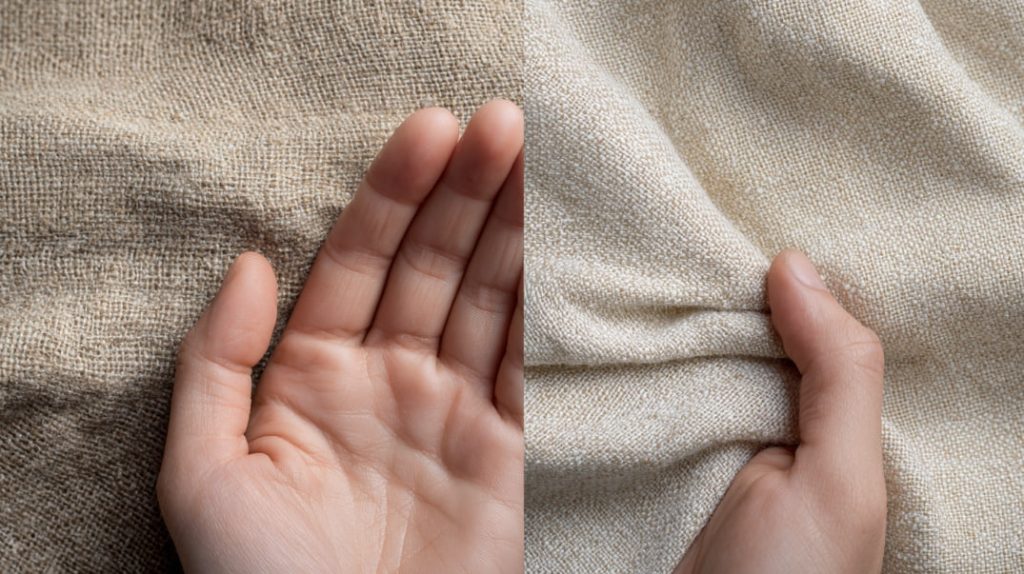
Key Differences Between Linen and Cotton
Texture and Feel
- Linen:
- Slightly rougher and stiffer initially.
- Softens and becomes smoother with every wash.
- Cotton:
- Soft, fluffy, and comfortable from the start.
- Maintains softness consistently.
Appearance
- Linen:
- Visible natural texture with subtle slubs and knots.
- Wrinkles easily, creating distinct creases.
- Cotton:
- Generally smoother with a less pronounced texture.
- Wrinkles less and the wrinkles are softer and less pronounced.
Moisture Absorption
- Linen:
- Exceptional moisture absorption and quick drying.
- Feels cool to the touch in hot weather.
- Cotton:
- It has good moisture absorption but dries slower than linen.
- It can feel damp for a longer period after getting wet.
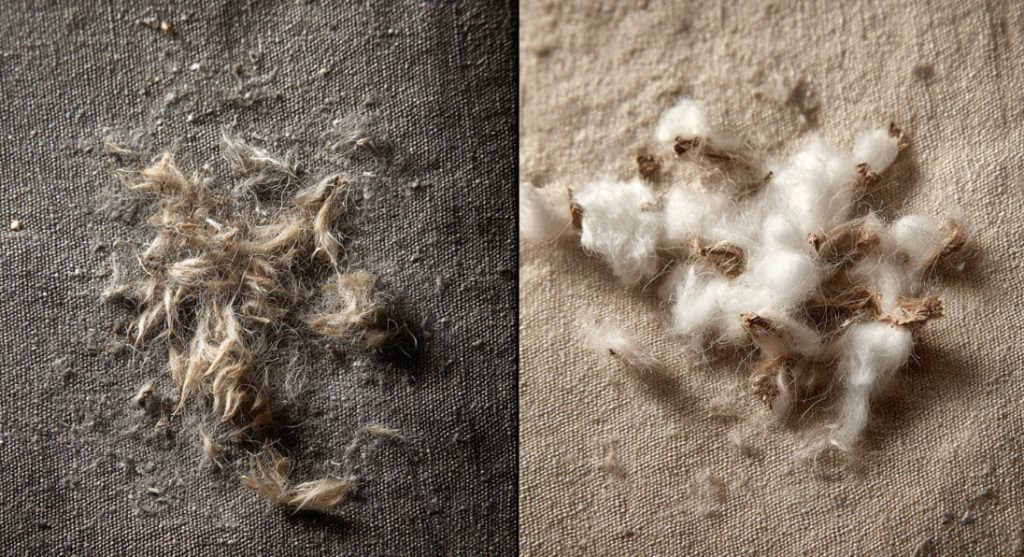
Quick Reference Comparison Table
| Feature | Linen | Cotton |
|---|---|---|
| Texture | Rough, smoothens with washes | Soft, consistently comfortable |
| Appearance | Textured, visible slubs, wrinkles | Smooth, fewer wrinkles |
| Moisture Absorption | High, fast-drying | Moderate, slower drying |
| Breathability | Excellent | Good |
| Durability | Highly durable, stronger with age | Durable, but less than linen |
The Practical Guide: What to Choose and When
- For Bedding:
- Linen: The ideal choice for summer or for anyone who sleeps hot. It provides a feeling of freshness and is excellent at regulating temperature.
- Cotton (Sateen/Percale): A universal, year-round option. It’s soft, cozy, and easy to care for.
- For Summer Clothing (Shirts, Dresses, Trousers):
- Linen: Unbeatable. In linen clothing, you will feel comfortable even in the most intense heat.
- Cotton: A good, basic choice, but can feel less comfortable in high humidity.
- For Kitchen Linens (Towels, Napkins):
- Linen: The best choice. It absorbs water instantly, dries quickly (preventing bacterial growth), and doesn’t leave lint on glassware.
- For Bath Towels:
- Cotton: The winner here. Terry cotton is softer, fluffier, and more pleasant against the skin after a shower.
At-Home Expertise: 4 Simple Tests to Be Sure
- The Water Test: Place a single drop of water on the fabric. Linen will absorb it almost instantly, and the wet spot will spread quickly. Cotton will absorb the moisture more slowly.
- The Light Test: Hold the fabric up to a light source. In a linen textile, you will likely see the imperfections and variations in the thread thickness. Cotton will appear much more uniform.
- The Wrinkle Test (and Sound Test): Squeeze a corner of the fabric tightly in your fist for a few seconds. Linen will form sharp, crisp wrinkles and may even make a faint crinkling sound. Cotton will have softer, less defined creases and will be silent.
- The Burn Test (Perform with extreme caution!): If you have a spare thread or a small swatch, carefully set it alight.
- Linen burns slowly and steadily, smells like burning grass, and leaves a fine, gray ash.
- Cotton burns quickly with a bright flame, smells like burning paper, and leaves a soft, feathery ash.
Simple Tests to Identify Linen vs. Cotton
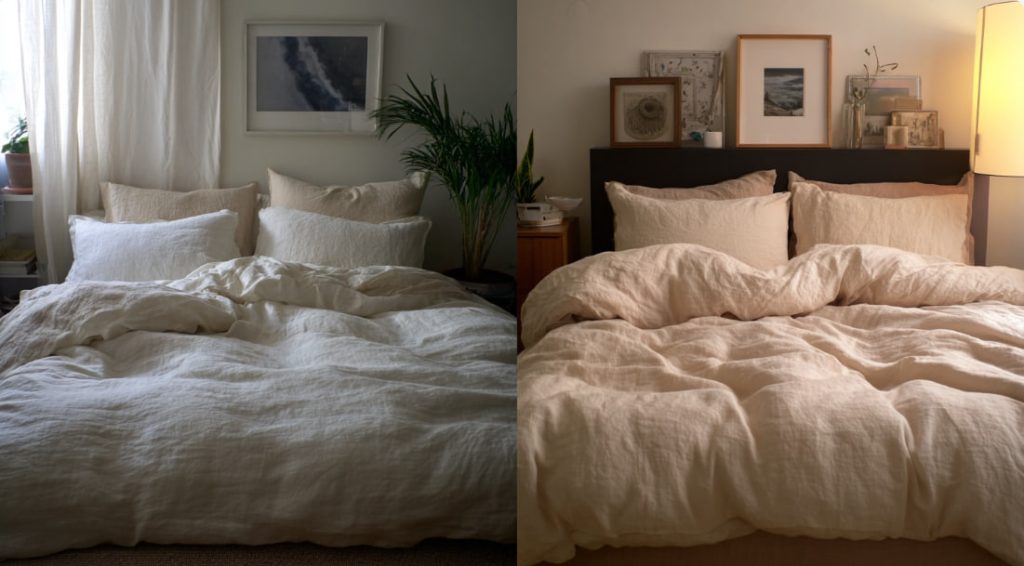
Burn Test
A small, safe burn test can help differentiate between linen and cotton:
- Linen: Burns slowly, producing little smoke and leaving fine grey ash.
- Cotton: Burns faster, with a steady flame, and leaves soft, powdery ash.
Safety Note: Conduct this test carefully in a controlled environment.
Water Test
Check fabric’s drying rate by moistening slightly:
- Linen: Dries quickly and feels cool.
- Cotton: Dries more slowly and stays damp longer.
Care and Durability: Making Your Textiles Last for Decades
- Linen: Wash at cool or lukewarm temperatures (30-40°C / 85-105°F). Don’t be afraid to wash it; it gets better with age. To make ironing easier, don’t over-dry it and iron while still damp on high heat. Linen is incredibly durable and can last for 20-30 years with proper care.
- Cotton: Can typically be washed at warmer temperatures (40-60°C / 105-140°F). It is easier to iron. Good quality cotton is also durable, but its fibers can thin and wear out over time.
Conclusion
There is no single “better” fabric—only the one that is “better suited” for your purpose. The choice between linen and cotton depends entirely on your priorities.
- Choose linen if you value maximum comfort in the heat, longevity, a unique natural texture, and sustainability.
- Choose cotton if your priority is initial softness, ease of care, and a more affordable price point for everyday items.
You are now equipped with the knowledge to make your choice not by chance, but with confidence. Pay attention to how the fabric feels, how it looks, and choose the one that will bring you joy and comfort for years to come.

